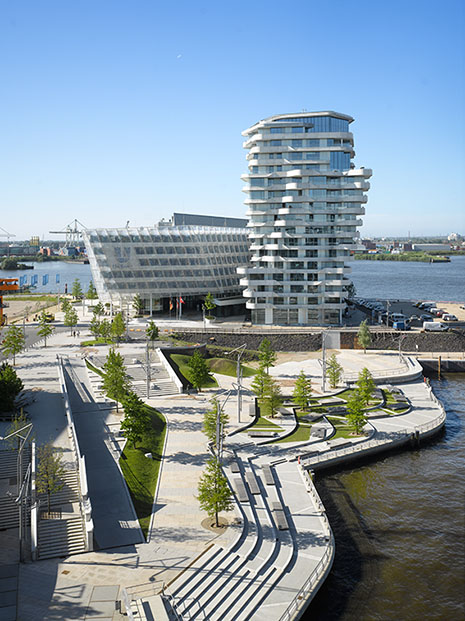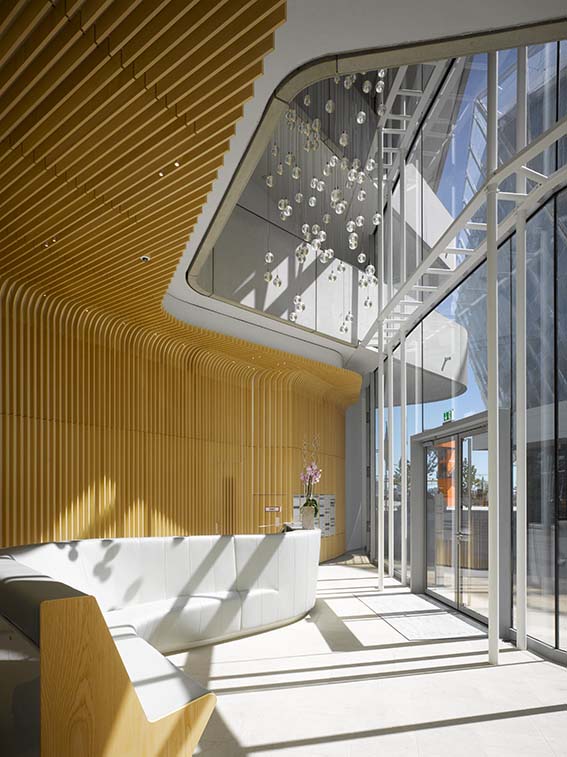Description
Urban context
As the striking southern termination of Hafencity, an area undergoing conversion
near the center of Hamburg and right next to the cruise-ship terminal, a
sixteen-story residential tower fifty-five meters high is being built along with
the main headquarters of Unilever, which extends up to seven stories. Set back
from the office building, the Marco Polo Tower forms the northwestern corner of
the site. The ensemble of buildings is located on the promontory between
Grasbrookhafen and Strandkai, directly south of the Marco-Polo-Terrassen. With
its exposed location on the Elbe River, this ensemble of buildings adds a new
accent to Hamburg’s skyline.
Ground-floor zone
The park of Marco-Polo-Terrassen continues to the south, flowing around both
buildings and thus connecting the promenades on the Grasbrookhafen to the
promenade on the quay on the bank of the Elbe. The main lobby of the tower is
developed from a concept for a multilayered design of the open space in the
narrow area between the residential building and the office building. A
multistory lobby leads the way to the central core that provides access to the
apartments on the upper floors. The entry level and the second floor will
accommodate public uses and numerous service facilities.
Building structure
The fifty-eight luxury apartments of this expressive building were transferred to
their owners as a raw shell with a central shaft for conduits, thus permitting a
great deal of latitude for individual design. The fifteen residential floors
have different layouts and the units are also distinct, ranging from 55 to 350
square meters and in some cases extending to two floors. All of the units are
accessed via the centrally located access core. Because of the verticality of
the building, the private sphere of the individual units is preserved despite
generously glazed facades and projecting open terraces. The winding shell
maximizes the attractive surfaces of the facade and at the same time generates
highly differentiated sequences of interior and exterior space by means of
niches and oriels.
Facade
This ensemble of office building and residential tower functions as a landmark in
its urban surroundings thanks to the shared formal idiom. Generous balconies,
terraces, and loggias provide the facade with spatial depth. The projecting
terraces are slightly rotated relative to the floors and form open spaces of
varying depth that offer optimal views either of the city center to the north or
of the harbor. The sculptural residential tower expresses exclusive
individuality.
Drawings
Photos
 Exterior view
Exterior view
 View of the duplex apartment
View of the duplex apartment
Originally published in: Ulrike Wietzorrek, Housing+: On Thresholds, Transitions, and Transparencies, Birkhäuser, 2014.